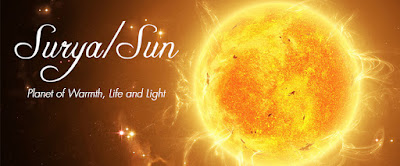Tandava! Vigorous Dance of Lord Shiva
Tāṇḍavam, also known as Tāṇḍava nṛitya is the creation
of Lord Shiva whose moods were depicted in this divine art form in the shape of
a dance that he used to perform. It is said that this dance created and first
performed by Lord Shiva, the creator of the universe who was supposed to be the
Master of Dance or The king of dance
Natraj himself.
It is believed by his
devotees that this Hindu God could vary the intensity of this graceful and
artistic dance to express the mood swings that were overtaking him quite often;
it is also believed that the complete cycle of creating, preserving and
dissolving in this world has its source in the Thandavam.
His Rudra Roop is the intense version of his personality, it
is also full of violence and even the gods used to run away when he was in that
fiery rage; he himself is the creator and destroyer too and, he is capable of
destroying death itself. When he assumes the Rudra Roop, he starts performing
the Taandava Nritya which is known
to be accompanied by a stotra which
is a eulogy or hymn that is sung along with the Tandava nritya
The other milder and
joyous version of the Tandava is called Ananda
Tandava which the lord used to indulge in when he was in a happier, more
pious or sexually aroused mood
Shiva is describes a s
Nataraja as per the Shaiva Siddhant traditions and he is the supreme lord who
invented the Taandava and its various branches; hence, he is the King of
Dancing.
Origin
The name of the dance
is derived from the closest disciple of Shiva who was called Tandu; he was so adept at his knowledge
of the dance form that he was the one who coached Bharata, the famous author of
the Natya Shastra, a book that goes deep into the world of dance and its
teaching. In doing so he also imparted a deep insight about the finer aspects
of the Thandavam particularly in the usage Karanas and Angharas modes of the
Thandava.
He has done this in
compliance to the instructions of Shiva but there is also a thinking in some
scholars that the Natya Shastra also contained an earlier work which might have
been written by Tandu himself.
It is also believed
that almost all the art forms of classical dance, music and song have been
derived from the rituals and mudras derived from the Shaiva traditions.
Raavan Tandava Strotra
In fact there is an
interesting story concerning the strotra that is sung along with the Thandav
nritya; it concerns Ravana who is said to have been the one who created the Raavan Tandav Strotra which was sung by
him as a prayer to Lord Shiva.
It is said that Ravana was
a byproduct of the union of both the gods and the demons and he was blessed
with the good qualities of both; the result was a personality, mind and body
that was second to none in terms of the divine powers that he possessed. These
powers kept on growing and he developed an awesome personality bestowed with
all the right qualities.
With strict penance and
meditation, he was able to please Lord Brahma who rewarded him with some
weapons while also granting him invincibility. This boon and its ramifications
went to his head and he went to Mount Kailash and uprooted it from the earth.
This affront offended Lord
Shiva who used his toe to push down the mountain entrapping Ravana and started
to crush him slowly. Sensing the extra pressure that was gradually increasing,
Ravana found himself unable to contain the massive weight of Mount Kailash.
Realizing that he had made
a huge mistake, Ravana started to plead for his life and sing praises to the
almighty lord to spare his life even though he was an ignorant person.
But, what emerged from his
learned entreaties was a wonderful form of poetry that was in the form of a
prayer to the great qualities of Lord Shiva to invoke his goodness to spare his
life; this prayer is known as Ravana Tandav Strotra. Since that time the
strotra is sung along with the Tandav nritya to invoke the forgiveness and blessings
of the Lord.
In turn, Lord Siva was
really impressed by Ravana’s artistic talent in coming up with an extempore
work of excellence that he pulled him out from under mount Kailash and rewarded
him with a Chandrahaas which is a weapon.
The feminine version
of the Thandavam is called Lasya
which Lord Shiva used to ask Parvati to perform; it is performed with great
grace and enthusiasm and is a hands-free rendition.
Thandavam, which is a
male dance is made up of mudras; e.g. the touching the index finger to the tip
of the thumb is called Dhyan Mudra and signifies the union of the male and the
female since the mounts of Venus and Jupiter meet.. There are seven such
Mudras.
The fourth chapter of
Natya Shastra has the 108 Karanas and the 32 Angharas of Thandavam.
The most amazing
aspect of the Thandavam is that, when Lord Shiva used to dance, many heavenly
entities used to accompany the performance of the Thandavam as follows:
1. Indra accompanies on
the Flute,
2. Saraswati Mata played
the Veena,
3. The rhythm was maintained by Brahma,
4. The Mrudangam was played by Lord Vishnu,
5. Lakshmi Mata used to sing along, and
6. All other deities would
stand around witnessing the rendition.
Tandav is a dance of power,
it is one of the ways to worship Lord Shiva and seek his blessings and love.





Comments
Post a Comment